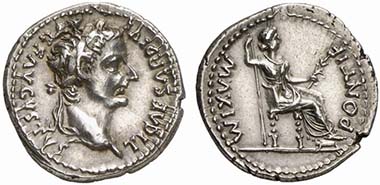Hands up anyone who hasn’t come to be annoyed by the tangled mass of regulations accompanying our tax collection. Entire professional branches like tax advisers and tax officers live on the complexity of the German tax system. One starts thinking if perhaps, at different times, the situation had been better; perhaps, at different times and in different places, there had been a paradise-like state where taxes were absent.
Albrecht Altdorfer, Birth of Christ. KHM, Vienna. Source: Wikipedia.
It is easy to dream of that but it doesn’t take too long to come across difficulties people of earlier times experienced with their tax offices. When flipping the New Testament open, for example, it can be read with Luke (Lu 2.1) (English Standard Version Bible): … “In those days a decree went out from Caesar Augustus that all the world should be registered.” … Thus, already in the Roman Era the citizens were acquainted with the tax return. This brings us right to our question: what was the structure of the Roman tax system like?
Generally, there were two different kinds of taxes, a tax on the yields of land (tributum soli) and a capitation tax (tributum capitis). The Roman citizens were exempt from the latter whereas all other inhabitants of the Imperium Romanum were obliged to pay. Augustus was the first emperor – all other subsequent emperors were to do the same on a regular basis –, who installed in the provinces and the captured territories lists all people, rich and poor alike, had to enroll in, for the state wanted to know which income to calculate with. Anyone who owned land completed a declaration of income – like today. The form of that estimation of future yields has come down to us, dating to Severan times, around A. D. 200. The tax payer first stated the name of his possessions, the district and the village where the fields were located. For a precise location of these fields, the names of the two next neighbors had to be stated in the official records, too. An important issue was the size of the property in case it was fields for grain farming. With vineyards the number of vine stock were stated, with olive groves the number of trees; with pasture lands, grassland and forests for timber cutting the declaration of measures sufficed.
The possession of slaves likewise was tax-effective. They had to be specified regarding origin, age, duties and standard education. The tax office was able to deduce from that the profit their owner would derive from them.
Fishponds and salines were regarded special income and were listed separately. Cattle, agricultural buildings and equipment were tax-free.
As a general rule, the tax-payers made a self-assessment although the authorities checked the plausibility of the declaration with the aid of old tax lists and measuring on site. In some cases even members of the local elite were charged with collecting the taxes since they were the ones who ascertained the most quickly and easiest way whether someone tried to evade taxes. Anyone planning on doing so had to expect to be put in irons and imprisoned.
So-called tribute penny, a denarius of Tiberius, RIC 30. From auction The New York Sale XX (2009), 395.
Even those devoid of possessions of any kind were obliged to pay a kind of personal income tax to the Roman authorities. They paid tax on their body as a potential instrument with which to earn a living. Consequently, children and elder people who in no physical condition to earn a living themselves, were exempt from taxes. That tax was regarded particularly oppressive and demeaning. That tax, too, is reflected in the New Testament (Math. 22 and Marc. 12.17): when asked the catch question by the Pharisees whether or not the paying of a capitation tax to the emperor was legal, Jesus asked to be shown a denarius of Tiberius as the coin that tax was generally paid with. He looked at the emperor’s head depicted on that coin and said: “Render to Caesar the things that are Caesar’s, and to God the things that are God’s.”





